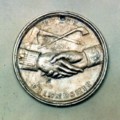| Question. What's in a name? What is the significance and meaning of the word "squaw," as understood by the contemporary Nimíipuu?
As used today, it is a term used to name various geographical features throughout the American west, such as Squaw Creek, Squaw Bay, Squaw Valley, Squaw Butte, and Squaw Peak. But it is also a term that has an extensive vernacular application as well, used in daily speech.
An Alien, Non-Indian Term with Assimilation Connotations. For members of the Nimíipuu community, the word "squaw" is understood as an alien, non-Indian term, introduced first by the Corps of Discovery and Lewis and Clark in 1805, and used by early fur traders and trappers who arrived in Idaho soon after. The specific term does not have an indigenous linguistic equivalence, nor has it been translated into the Nez Perce language.
Its use as a geographical place-name is given the particular significance as it reflects the processes through which Euro-Americans sought to impose various levels of cultural, economic and political jurisdiction and sovereignty over the Indian tribes of the American West. The eventual "ownership" and control of vast tracks of land and natural resources by the dominate society has always been expedited by first replacing the specific indigenous terms for the lakes, rivers and mountains with Euro-American terms. The use of the term "squaw" is part of this assimilation process, and hence has this connotation by Indian peoples.
A Derogatory and Demeaning Term. In the communities which border the reservations of north-central Idaho, the social contexts within which the word "squaw" is often uttered by whites and received by Indians today is critical in clarifying the word's meaning. Lewis and Clark perhaps attached a more neutral meaning to the term's use in their day, not deliberatly intending it to be offensive. In daily verbal discourse today Indians generally understand the term in a highly negative fashion, referring to a range of derogatory and demeaning significances. Such meanings include, "whore," "loose woman," and specific parts of the female genitalia. In considering this social context for the use of the word "squaw," it is typically understood by Indians as a racial slur on his or her person, family, community, and/or heritage. The term "squaw" is not a term of endearment, nor used in a friendly manner. This is not to suggest that some whites, unaware of its derogatory meaning, occasionally use the term out of ignorance of the meaning it holds for Indians.
While the term may have been part of the common vernacular of Euro-Americans of the 18th century, should the word "squaw" continue to be used in our conversations with one another and to address Indian women, and to name and identify the scenic and historical natural features of our shared landscape?
© Nez Perce Tribe 2002
< previous |




